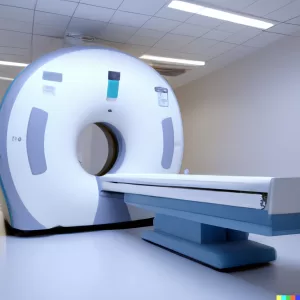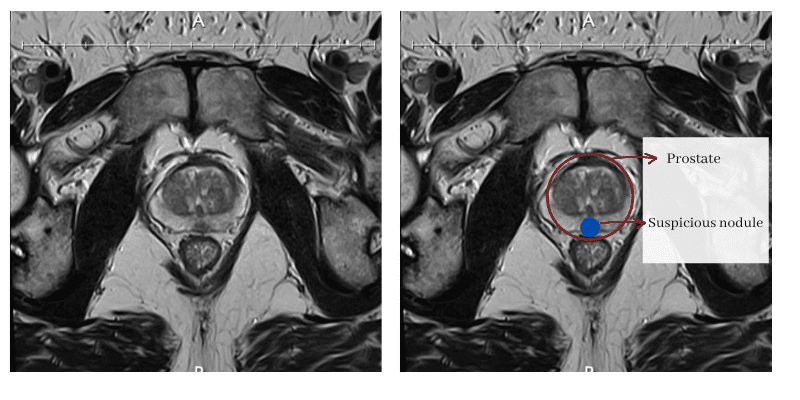If you have concerns about your prostate health, you may be wondering if you need a prostate MRI. Here’s what you need to know about it.
What is a Prostate MRI?
A prostate MRI is a test that uses magnetic fields and radio waves to create detailed images of your prostate.
We use it to detect prostate cancer and other conditions of the prostate, such as prostatitis and enlarged prostate.
Who needs it?
Your doctor may recommend an MRI if you have:
- high PSA level or some concerning symptoms. The most common symptoms are urinary: you pee too often, need to get up at night to pee, blood in your pee…
- a family history of prostate cancer: some member of your family already had prostate cancer, especially if it happened at a young age
- been diagnosed with prostate cancer and need to find the extent of the disease
What Tests Should You Get Before an MRI?
Before you have a prostate MRI, your doctor will likely recommend other tests, such as a digital rectal exam (DRE) and a prostate-specific antigen (PSA) blood test.
These tests can help detect abnormalities in the prostate and determine if you need other tests:
- Digital rectal exam (DRE): basically your doctor will insert a finger up your rectum. That’s because your prostate is right next to your rectum, so you can literally feel your prostate that way. By touching it, your doctor can feel if there are any hard nodules that might look like cancer.
- PSA: through a blood test we can measure your PSA, a marker of your prostate. Men can have a high PSA for several reasons, like prostate cancer, an enlarged prostate or prostatitis (infection of your prostate).
If these tests are not normal, chances are you’ll get an MRI.
What Is It Like Getting a Prostate MRI?
A prostate MRI typically takes about 30-60 minutes. You will lie on a table that slides into a narrow tube, which can feel a bit claustrophobic to some people.
Then, you will need to lie still during the procedure, and they may give you some earplugs or headphones to block out the loud noises made by the machine.

In some cases, they may need to give you some i.v. contrast agent to enhance the images. If that’s the case they’ll insert a IV line in your arm.
If you are feeling anxious or uncomfortable, we sometimes give patients some medication to help them relax, like a small sedation.
What Are the Advantages of Prostate MRI?
Compared to other tests, such as CT scans or ultrasounds, an MRI provides a more detailed look at the prostate gland and surrounding tissues. This can help doctors detect abnormalities that may be missed by other tests.
In the following example we found a suspicious nodule in our patient’s prostate:

Some advantages of prostate MRI include:
- Very good at detecting prostate cancer
- It can detect prostate cancer at an earlier stage, before it spreads
- It also checks the surrounding tissues, finding if the tumor has spread
- It can detect suspicious nodules to guide a biopsy later
However, it’s important to note that MRIs have some limitations. An MRI may produce false positives or false negatives, and it may not be appropriate for all patients. That’s why it’s important to follow the right steps, which your doctor will tell you about.
- False positive: the MRI shows a suspicious nodule but it ends up not being cancer.
- False negative: the MRI doesn’t find any suspicious nodules but there is some cancer, only it is too small to be detected.
In summary, a prostate MRI can be a valuable diagnostic tool for detecting prostate cancer and other conditions of your prostate.
If you still have concerns about your prostate health, talk to your doctor about whether a prostate MRI is right for you.
Leave a Reply